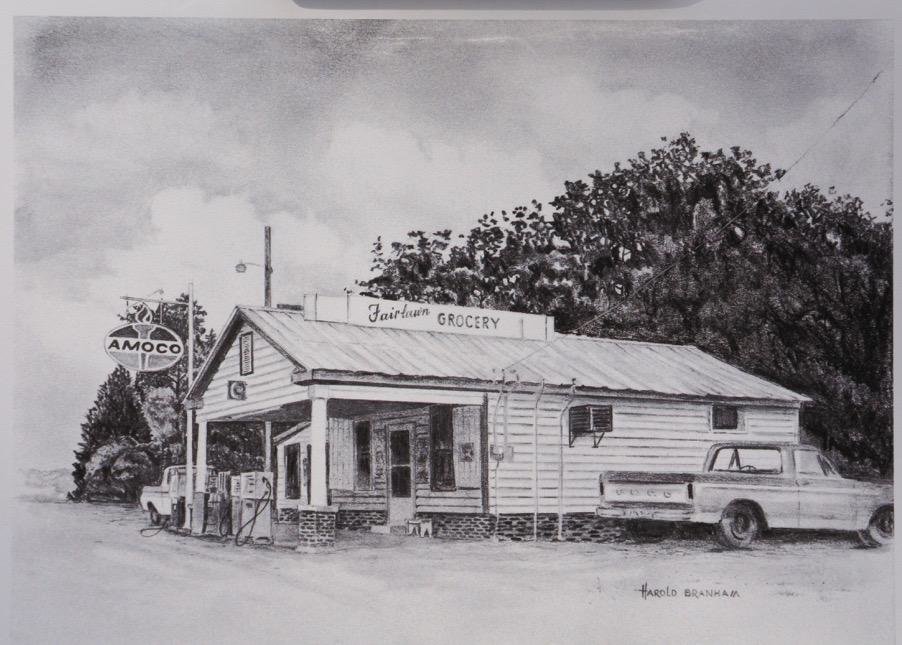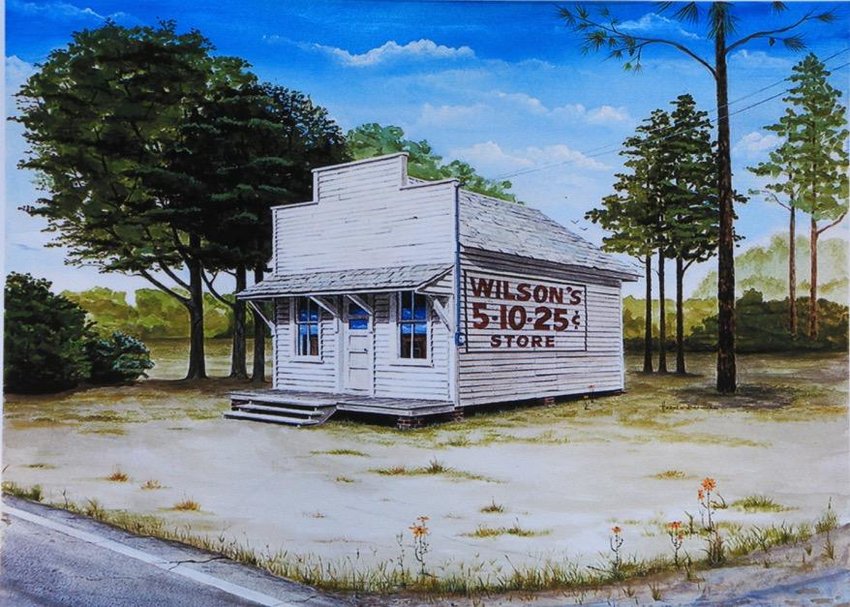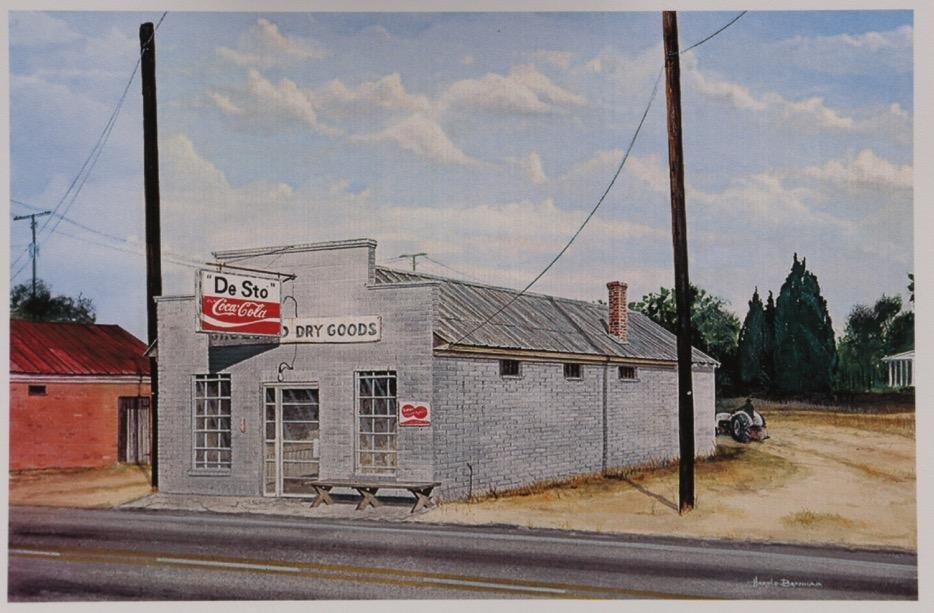Folk artist preserves the past
tompol@earthlink.net
We need more Harold Branhams.
In a time when things old and quaint fall to modern ways, it’s good to have someone preserve the past.
That would be my friend, Harold Branham, a …
This item is available in full to subscribers.
Subscribe to continue reading. Already a subscriber? Sign in
Get 50% of all subscriptions for a limited time. Subscribe today.
Please log in to continueNeed an account?
|
Folk artist preserves the past
tompol@earthlink.net
We need more Harold Branhams.
In a time when things old and quaint fall to modern ways, it’s good to have someone preserve the past.
That would be my friend, Harold Branham, a true folk artist.
Just recently he gave me a set of prints of country stores, the vintage types. A lot of us drank our first Coke at a country store. Harold recalls the ones that made his boyhood days better, and we’re richer for it.
With Harold as our guide, let’s visit some great old stores that once served the people in and around Blythewood, South Carolina.
Here’s what Harold wrote about Wilson’s 5-10-25¢ Store, a place known as the Wishing Well.
“Back when a dime was a dollar, a person could do a lot with just a little in places like Wilson’s 5-10-25¢ store. This wishin’ well had numerous eye openers for the younger shoppers. There were things like paper, pencils, shoestrings, jump ropes, paper dolls, and even fireworks and plastic slingshots.
“The greatest asset the Wishin’ Well had to offer was Mr. Wilson’s ability to dissect a dollar so a young-un could expire their entire Christmas list with much pride. I wonder if the big Walmart of today would be as compassionate to a small kid.”
Here’s another classic, De Sto. Of it Harold wrote, “It was places like De Sto in Blythewood, S.C., where one might not find everything they seek, but they could always find a friend. One reason I would term these type places as friend finders.
“Claude Bundrick was one of the regulars at De Sto. It is Claude in the painting doing his weekly shopping on his ‘most universal’ means of transportation. [Look closely, you’ll see a tractor.] Claude was a friend to a lot of folks ... I admired him.”
Fairburn Grocery’s gone through a few changes. Here’s what Harold had to say:
“The first time I was introduced to the building, it was known as Lever’s Store. It was located about two miles north of Lake Elizabeth in the community of Fairlawn and seven miles south of Blythewood. I grew up there.
“On occasions I would slip off from home on foot or a one-speed bicycle and pick up bottles on the way to barter for bubble gum and always took a piece home to my sister so she wouldn’t tell.
“Much later on a buddy of mine talked me into a chew of Bloodhound Chewing Tobacco. It wasn’t near as good as that Double Bubble gum and it didn’t take but one application to cure my curiosity.
“When new management took over they renamed it Fairlawn Grocery. It became Fairlawn’s Town Hall. The new management also had a beer license, and some of the locals called it the Red Dog Saloon, but it still had the country store atmosphere with milk, bread, bologna, and household stuff. I spent a lot of time shopping and hanging there while visiting with the local folks.”
Harold said the old stores were the lifeline to rural Americans, writing, “Should you happen to pass one of these old rare gems on the road, stop, turn around, go back and buy something whether you need it or not.”
Harold’s interest in art grew from his first set of crayons. Later, he worked as a sketch artist for one of the South’s major sign companies. He wrote something that speaks to me: “My hometown may now be home to red lights, fast food stops, and motels, but my favorite subjects remain old farmhouses, country stores, and pastures.”
Same here, Harold. The old places just seem more real.
Keywords
down south, tom poland, folk art, paintings, general store, general storesOther items that may interest you












Comments
No comments on this item Please log in to comment by clicking here